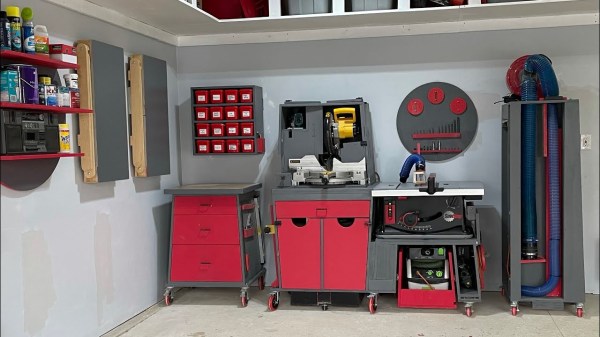If you want a regular table saw, you’re probably best off just buying one—it’s hard to beat the economies of scale that benefit the major manufacturers. If you want a teeny one, though, you might like to build it yourself. [Maciej Nowak] has done just that.
The concept is simple enough; a small motor and a small blade make a small table saw. [Maciej] sourced a remarkably powerful 800-watt brushless motor for the build. From there, the project involved fabricating a suitable blade mount, belt drive, and frame for the tool. Some time was well-spent on the lathe producing the requisite components out of steel and aluminum, as well as a stout housing out of plywood. The motor was then fitted with a speed controller, with the slight inconvenience that it’s a hobby unit designed to run off DC batteries rather than a wall supply. Ultimately, though, this makes the saw nicely portable. All that was left to do was to fit the metal top plate, guides, and a suitably small 3″ saw blade to complete the build.
We’ve seen mini machine tools like these before, too. They can actually be pretty useful if you find yourself regularly working on tiny little projects. Video after the break.


















